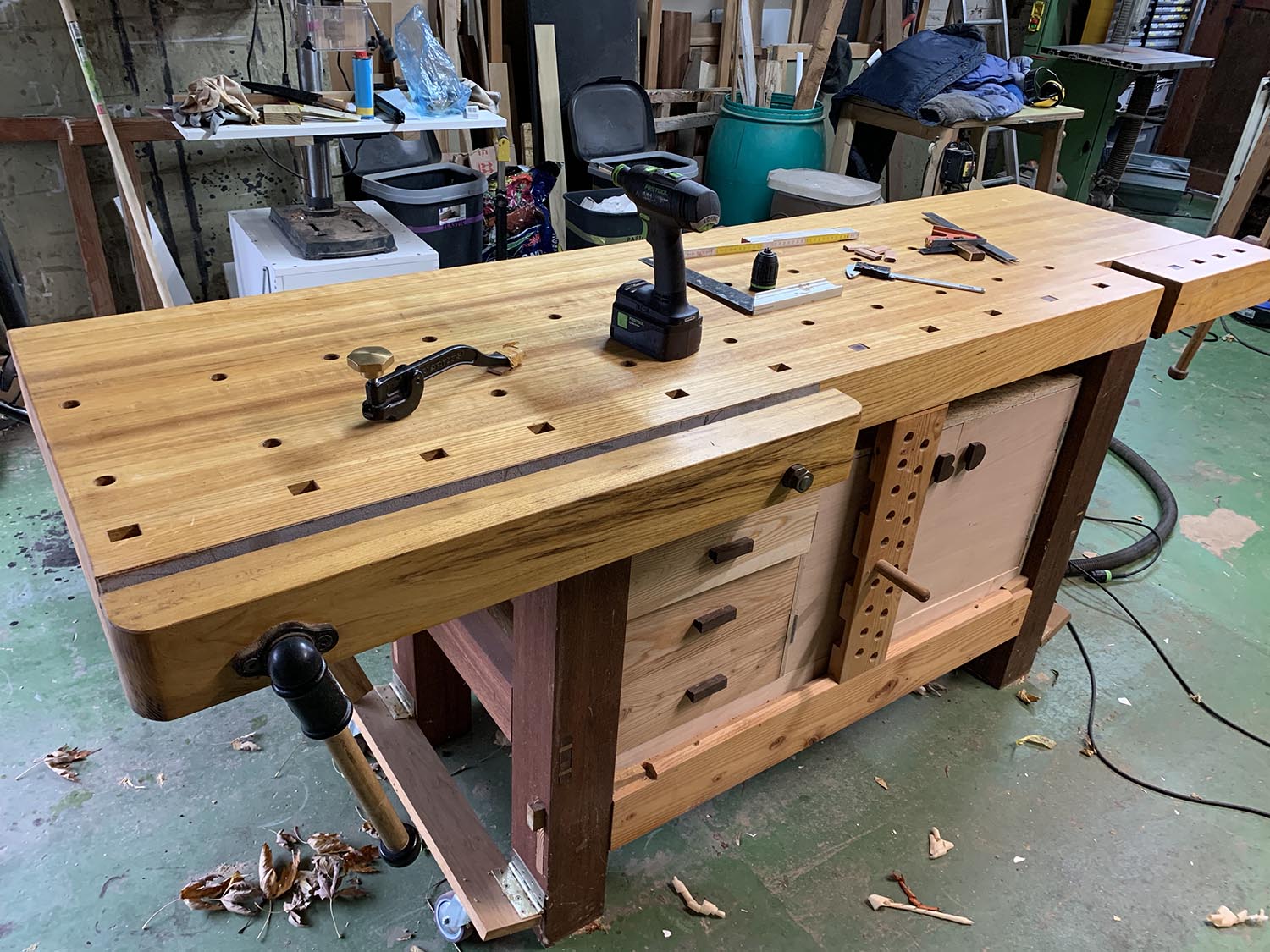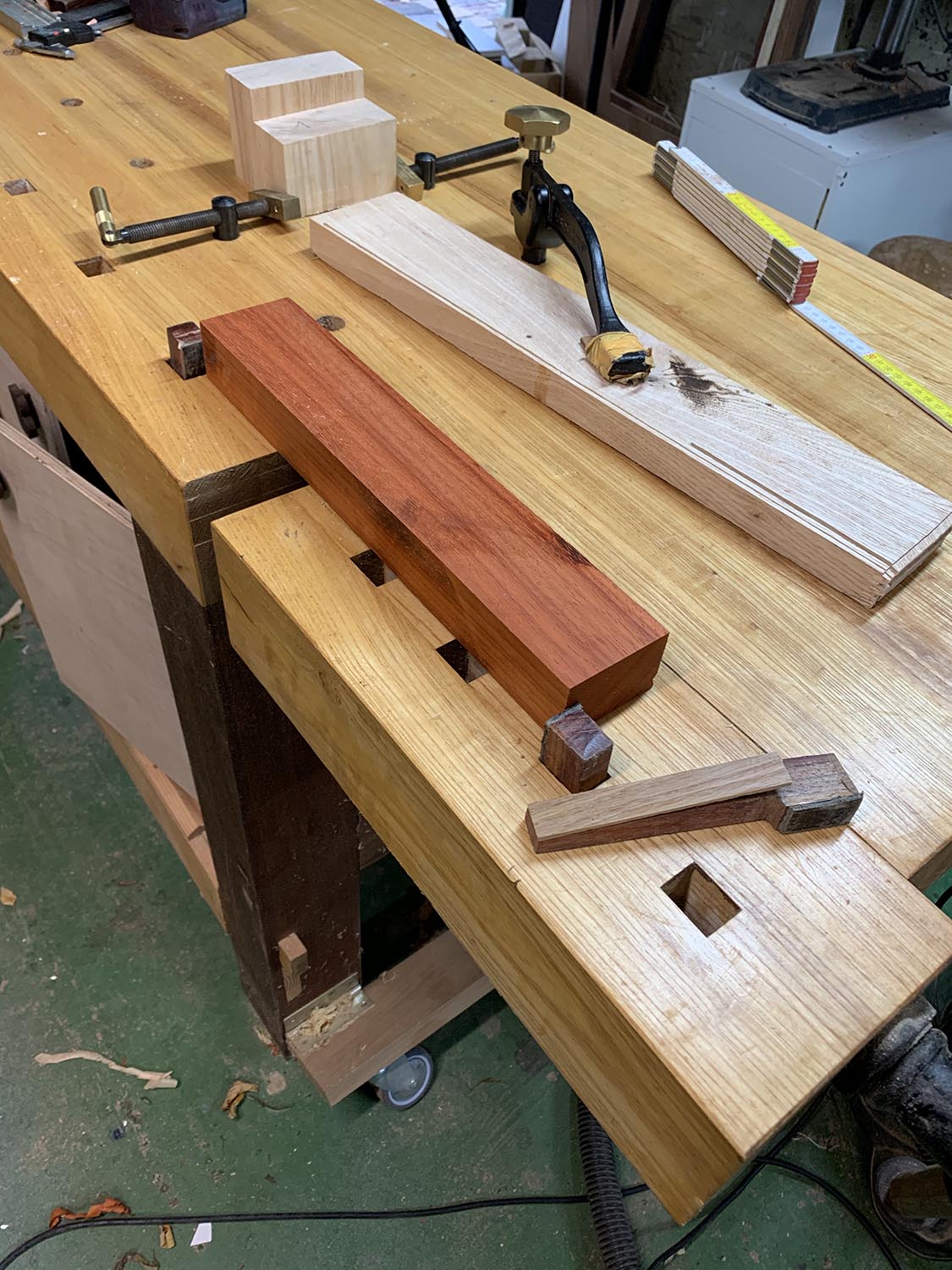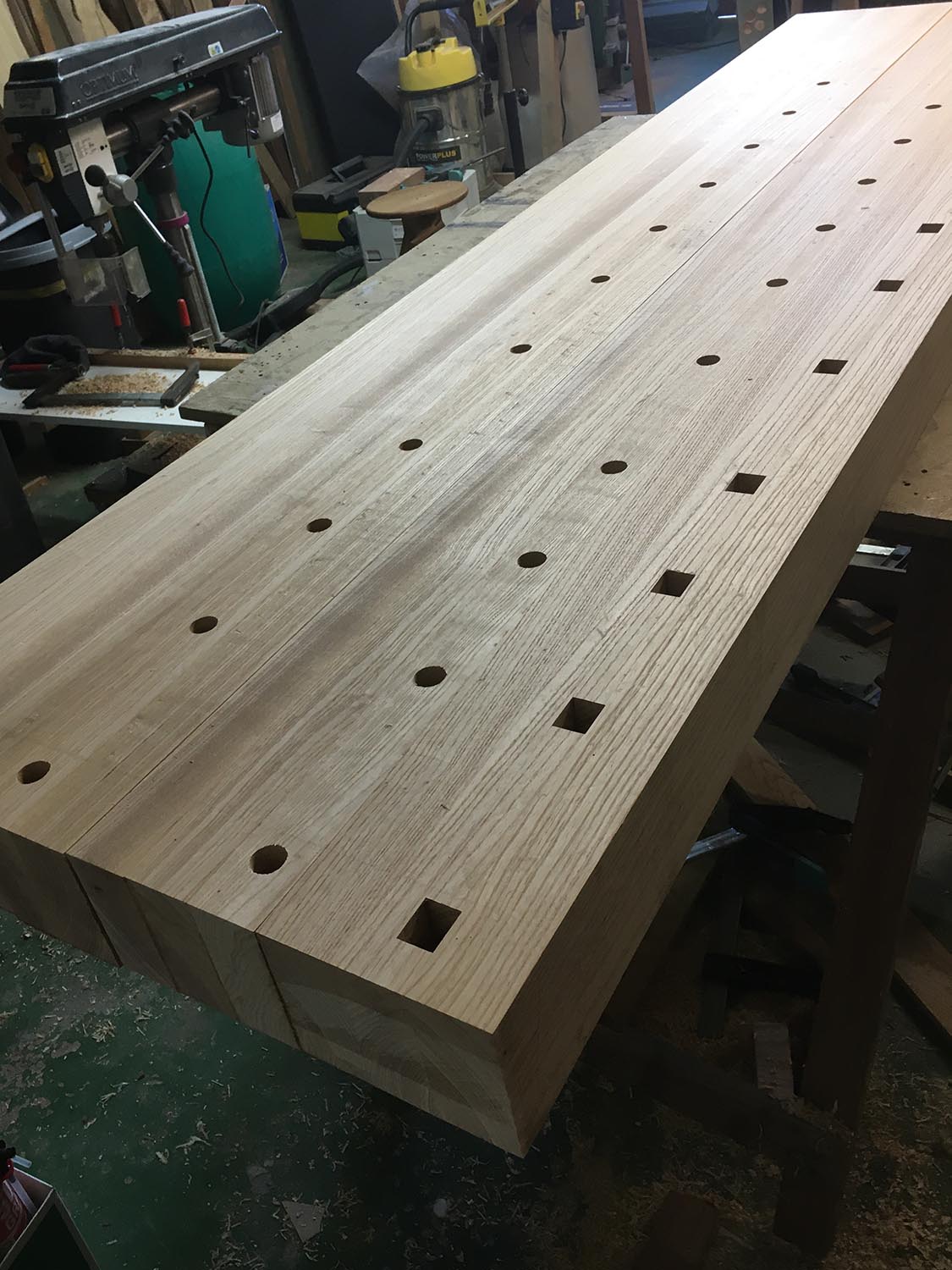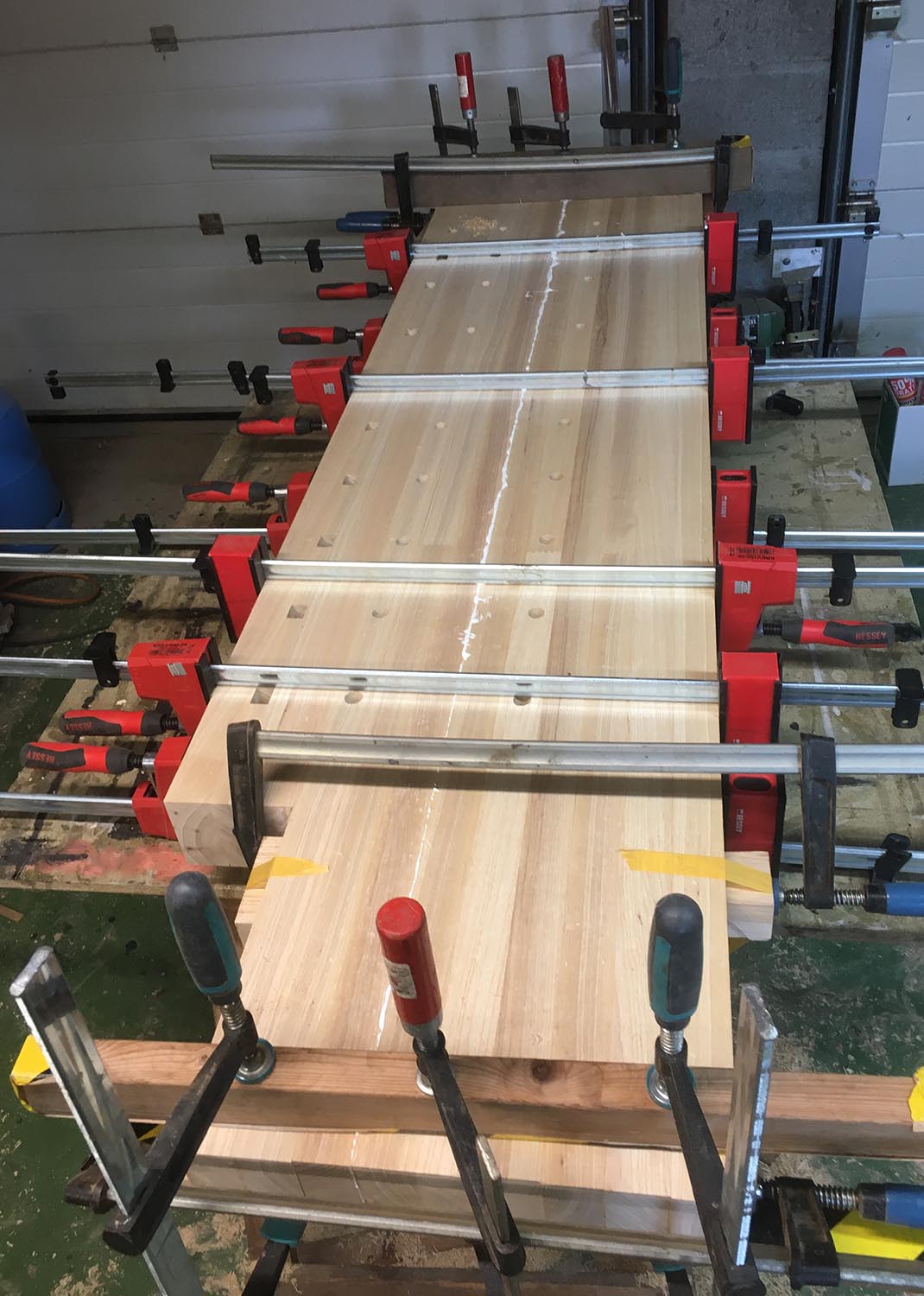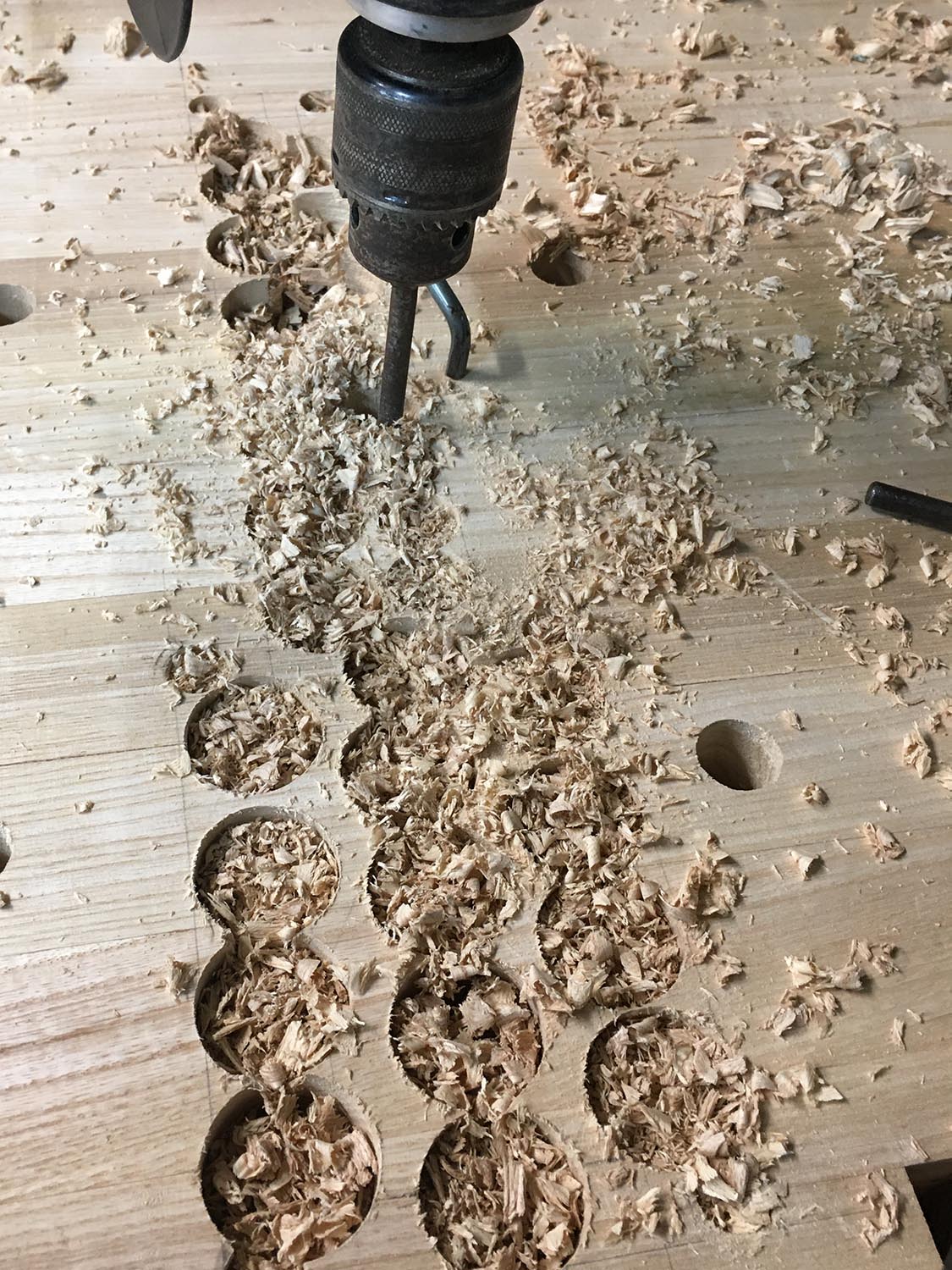Hybrid roubo workbench
This is a hybrid Roubo style workbench, adapted from the project described in Fine Woodworking.
I wanted to make the bench top in maple but unfortunately the lumberyard was out of stock and I didn’t want to wait, so I settled for ash, which is softer. The legs are made from meranti, of which I had some stock laying around already for years, without using it. The stretchers are from oregon pine. I later added a cabinet with 2 doors and three drawers to sit under it, made mostly from plywood and yellow pine for the drawer fronts. I didn’t add the angled braces described in the original design as I believe the bench is more than sturdy enough without them.
The jaws of the bench vise are 88 cm long and the vise uses Lie Nielsen hardware consisting of 2 chain drive screws. Super happy I chose the largest size for this as I can place pieces up to 60 cm between the screws. The tail vise also uses Lie Nielsen hardware and works super well. Together with the round and rectangular bench dog holes, home made bench dogs and some other clamping devices this offers many clamping options which is something I was really looking for. I added some leather to the inside of the vise jaws and the bench dogs for protecting the workpieces.
It also has a sliding “deadman” with multiple holes that accept a peg, to support long pieces. As the bench is very heavy (100 kg?), I added castor wheels which are attached to a horizontal bar made of oak that is attached to the legs using hinges. A vertical batten is connected to this and has a wheel at the end that rides against the underside of the bench. When it is moved inwards, the wheels are lowered and the legs raised from the floor.
Dimensions are: H 91 cm; W 62 cm; L 210 cm. The top is 10 cm thick.
Overall, I’m super happy with how the bench turned out and it’s a joy to work with. I finished the top with about 5 coats of Danish oil and several coatings of wax. Nevertheless, whenever I’m gluing or painting something I put a large piece of carton on the bench as I don’t want to ruin the top, and I’m super careful when drilling or sawing as I don’t want the bench to end op with multiple saw marks, drill holes or stains, like my previous bench (which I am now using more for the “dirty” work.


